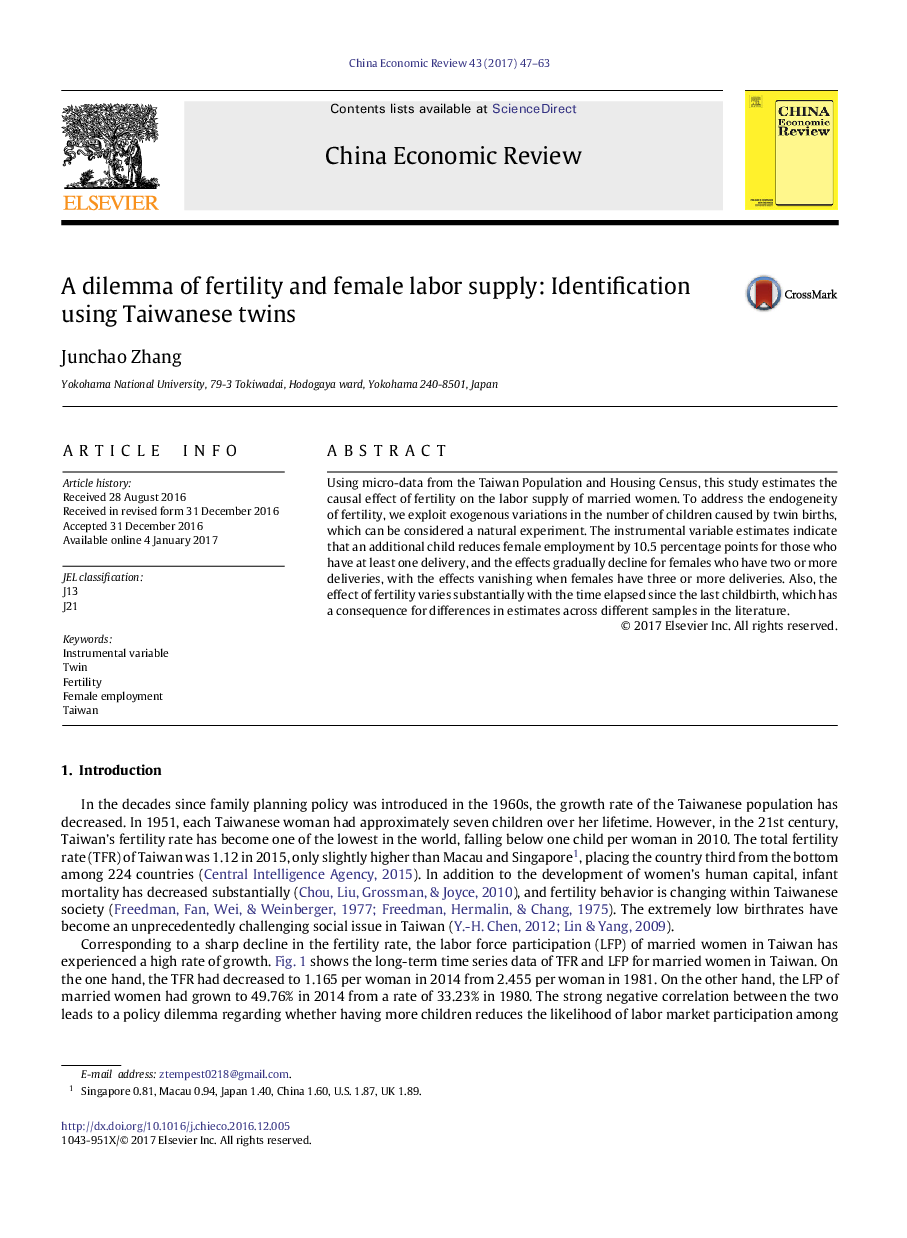| Article ID | Journal | Published Year | Pages | File Type |
|---|---|---|---|---|
| 5047288 | China Economic Review | 2017 | 17 Pages |
â¢This paper estimates the causal effect of fertility on female labor supply.â¢I find that the effect of fertility on female labor supply is not monotonically decreasing in the number of births.â¢The adverse effect of fertility on labor supply increases and then decreases in the number of children that a woman has.â¢Fertility no longer reduces female labor supply for mothers who have three or more deliveries.â¢The results have important policy implications in terms of raising fertility rate and female labor supply simultaneously.â¢The results are robust to different identification strategies and specifications.
Using micro-data from the Taiwan Population and Housing Census, this study estimates the causal effect of fertility on the labor supply of married women. To address the endogeneity of fertility, we exploit exogenous variations in the number of children caused by twin births, which can be considered a natural experiment. The instrumental variable estimates indicate that an additional child reduces female employment by 10.5 percentage points for those who have at least one delivery, and the effects gradually decline for females who have two or more deliveries, with the effects vanishing when females have three or more deliveries. Also, the effect of fertility varies substantially with the time elapsed since the last childbirth, which has a consequence for differences in estimates across different samples in the literature.
